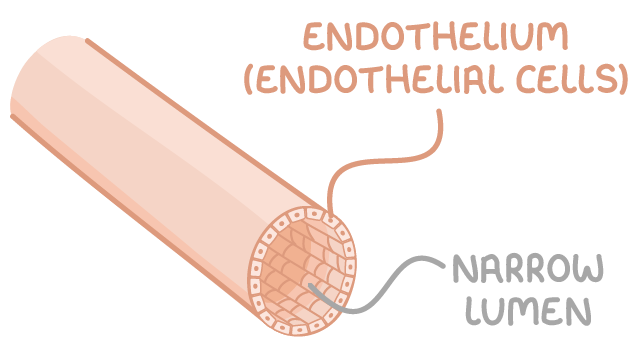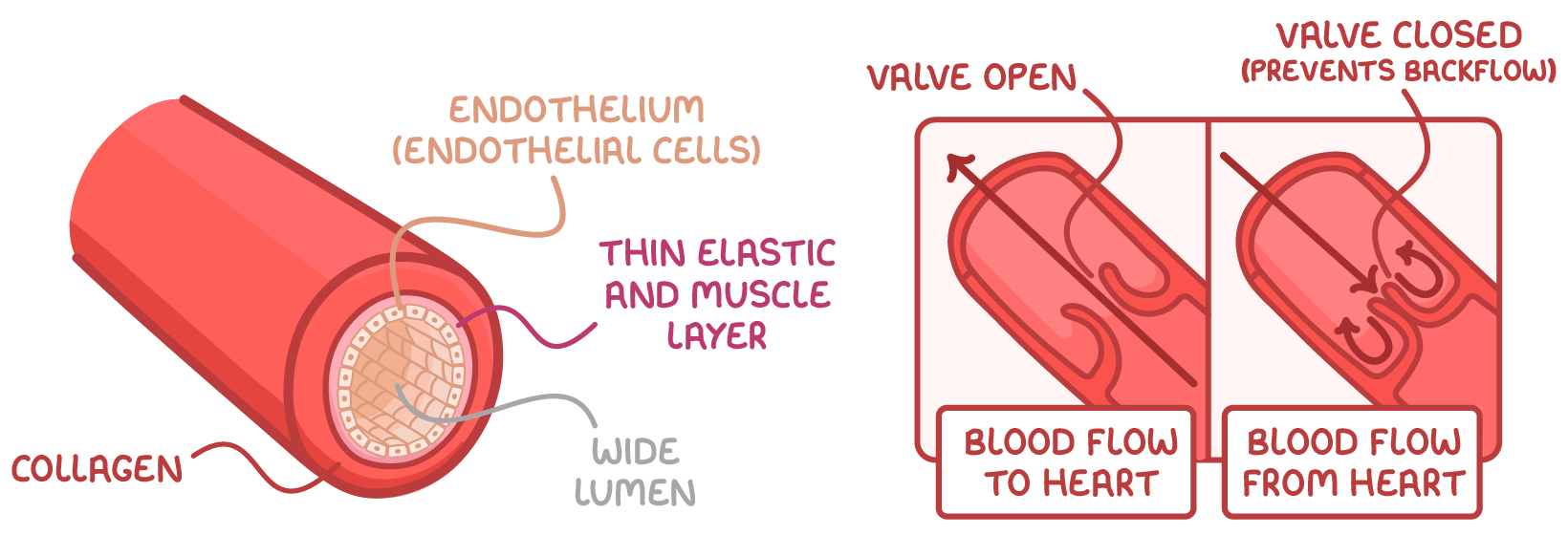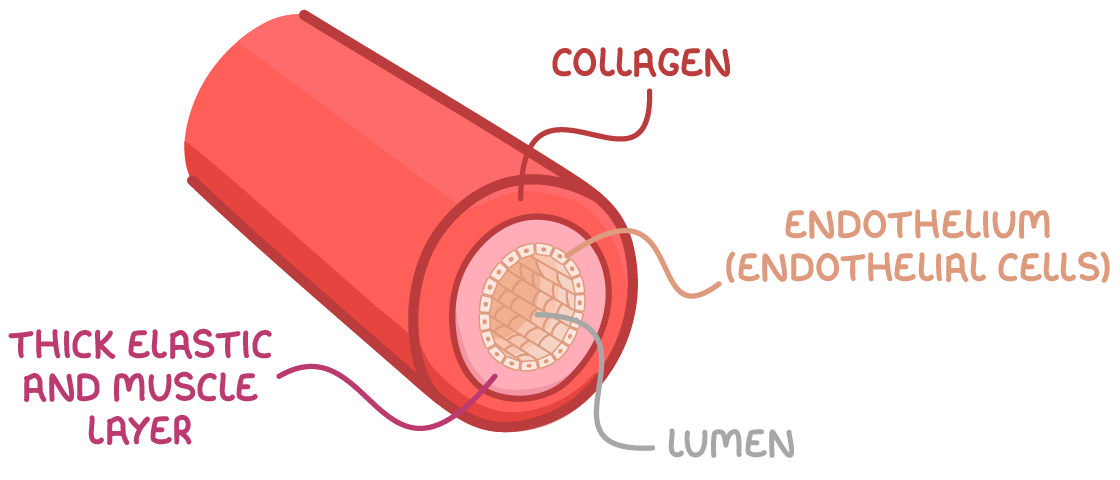unit 5 biology
1/5
There's no tags or description
Looks like no tags are added yet.
Name | Mastery | Learn | Test | Matching | Spaced |
|---|
No study sessions yet.
6 Terms
Arteries
carry blood away from the heart to the body
High pressure in them as it’s being pumped by the heart
The blood is oxygenated. The red blood cells have haemoglobin which bond with oxygen making oxyhemoglobin which cause the blood to have a bright red colour
Deep inside the body
Veins
carry blood from the body to the heart
Low pressure
Due the low pressure valves are needed to prevent back flow and help compensate for the lack of pumping force to help with directional flow
Due to less oxygenated blood has a dark red appearance and it’s closer to the surface
Capillaries
between the artistries and veins and Carry blood to and from the cells of the body
Capillaries structure
Capillaries
(Site of nutrient and gas exchange)
Inner Layer
:
Lumen – Very narrow (about 5-10 µm in diameter)
Why: The narrow lumen forces red blood cells to pass through one by one, which slows down the blood flow and enhances exchange with tissues.Endothelium – Single layer of endothelial cells
Why: This thin layer allows quick and efficient exchange of oxygen, carbon dioxide, nutrients, and waste between blood and tissues.
Outer Layer
:
Basement membrane – Very thin support layer
Why: Provides structural support without obstructing the exchange of gases and nutrients.
Size of Capillaries:
Capillaries are the smallest blood vessels, with a diameter of about 5-10 µm (micrometers). Their size allows for the efficient exchange of gases, nutrients, and waste.

veins structure
Inner Layer
:
Lumen – Large (about 8-15 mm in diameter)
Why: The wide lumen allows blood to flow more easily at lower pressure.Endothelium – Smooth layer, contains valves
Why: Prevents blood from flowing backward due to low pressure.
Middle Layer
:
Elastic tissue – Small amount
Why: Veins don’t need to stretch and recoil as much as arteries because they deal with low-pressure blood flow.Smooth muscle – Thin layer (about 0.1–0.5 mm thick)
Why: Veins are less involved in controlling blood flow, so the muscle layer is much thinner than in arteries.
Outer Layer
:
Connective tissue – Thicker than in arteries
Why: Supports the vein and maintains its shape under low pressure.
Size of Veins:
Typically have a larger lumen than arteries (ranging from 8-15 mm). Veins carry blood back to the heart, usually at low pressure, and therefore need more space for slower-moving blood.

Arteries structure
Arteries
(Carry blood away from the heart under high pressure)
Inner Layer
:
Lumen – Small (about 4-10 mm in diameter)
Why: Keeps blood under high pressure to move quickly away from the heart.Endothelium – Smooth layer of endothelial cells
Why: Reduces friction and helps prevent clotting, allowing smooth blood flow.
Middle Layer
:
Elastic tissue – Thick, allows stretch and recoil
Why: Helps the artery expand with each heartbeat and recoil to maintain blood pressure.Smooth muscle – Thick layer (about 0.5-2 mm in thickness)
Why: Regulates blood flow by constricting or dilating the vessel.
Outer Layer
:
Connective tissue – Thick
Why: Provides strength and durability to withstand the high pressure of blood being pumped through.
Size of Arteries:
Typically have a larger diameter compared to veins and capillaries (ranging from 4–10 mm depending on the artery). Arteries need to carry blood under higher pressure and over greater distances.
